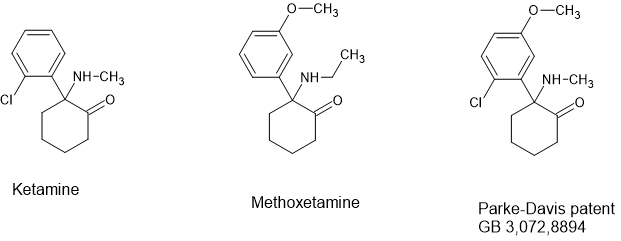unodelacosa
Bluelighter
Relevant: https://www.vice.com/en/article/ppzgk9/interview-with-ketamine-chemist-704-v18n2Yes - the person who designed MXE really did come up with a novel compound and indeed tested it for an extended period before agreeing that it was the best of the ACAs that they had sampled (and trust me, they sampled a LOT of them and paid a price).
Check this part out:
The methoxetamine molecule was something I had floating around in my head for about three years. I just knew it would really be something fantastic; it contains every necessary functional group to produce the perfect dissociative. I felt it would be like a stress-free version of ketamine. Eventually I found someone who was interested and made a small batch, and when I tested it… I was blown away. It doubtless has great potential as an antidepressant. A vendor took interest and synthesized a batch for public distribution, and it took off. Now there are all kinds of fake variations for sale, tiletamine analogs and whatnot. The popularity was not a surprise, but I was surprised by the willingness of Chinese laboratories to synthesize it. A few years ago Chinese labs would not produce arylcyclohexylamines under any circumstances. In China, those suspected of trafficking large quantities of ketamine are executed. In Singapore, ketamine dealers face 15 strokes of a brine-soaked rattan cane to the bare buttocks… probably in addition to execution. Risky business.
This is fascinating. So they also had discovered MXE, essentially. They just built it with the 2-chloro molecule present in Ketamine. Like you said before: maybe Methochloroxetamine, MCXE. Or 2-Chloromethoxetamine, 2CMXE. (EDIT: I just noticed the PD patent is using a methylamino group and not MXE's ethylamino moiety) And no literature on it? Intriguing…As noted, MXE is novel but Parke-Davis had patented the 2-chloro-5-methoxy homologue. A patent that covered just TWO compounds. I do not know what their studies found, but evidently it possessed significant advantages.

Still that's specific. And you're saying there are two compounds here in that its one chiral center gives it two stereoisomers, right?Now I do not know why they made the patent so narrow. Generally, if you make a very narrow patent then it's MUCH easier to uphold in law.
And by this you mean the 'island' of activity is defined as having a close grouping of active homologues otherwise surrounded by a sea of inactivity, more or less? But already, we know that the deschlorinated homologue of the Parke-Davis patent—what we commonly call MXE—is active, and so are a shitload of closely related compounds, so perhaps that's not in fact why the specificity? I think it may have had to do with a desire to be able to defend that compound's patent with no ambiguity. Could it be that good? MXE is phenomenal.That a US company only filed a British patent is also unusal. But if I had to guess, it's because in animal models at least, it represented an 'island of activity'.
Did it have any other kind of name to reference? (R/S)-2-(2-Chloro-3-Methoxyphenyl)-2-(methylamino)cyclohexanone, something like that? Does the name nor-chloro-MXE make any sense?So while I do not know WHAT they found, they spent a lot and appeared to wish to keep quiet what they had found - no papers on the topic exist.
Last edited:





